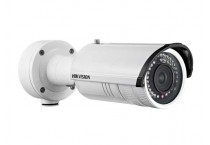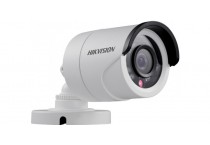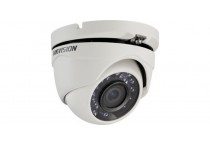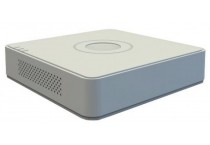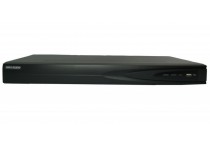|
Closed Circuit Television (CCTV) is a system where the circuit in which the video is transmitted is closed and all the elements (camera, display monitors, recording devices) are directly connected. CCTV (Closed Circuit TV) uses one or more video cameras to transmit video and sometimes audio images to a monitor, set of monitors, or video recorder. The difference between CCTV and standard TV is that standard TV openly broadcasts signals to the public. CCTV is not openly transmitted to the public. CCTV uses either wireless or wired transmission to send the broadcast from the video cameras to the monitor(s) or recording device. Most CCTV systems are used for surveillance, which can include security monitoring, spying, or safety monitoring. |
 |
|
CCTV Cameras |
CCTV systems have become extremely popular over the last few decades as the technology has improved and become more affordable. The majority of CCTV cameras in use today are usually for surveillance and security purposes. CCTV systems can be found in almost every bank, casino, mall, and large department store. In fact, CCTV systems have become so affordable, most smaller mom and pop stores also have CCTV systems in them for security purposes.

How does a CCTV Camera work?
A CCTV system has four major components namely: the camera, lens, monitor, and video tape/recorder.
Among these components, the camera is the most important because it is the one that collects the images. The camera works the same way that an ordinary cameras does only that it can be left to operate on it on own.
The camera comes with a motor that helps it to move the zoom parts. Once an image has been picked by the camera, it is taken to the monitor and then recorded on video tape or DVR. The ability of the camera to zoom in and out is determined by the type of lens it has.

How do CCTV Cameras Work?
CCTV stands for closed circuit television and it is used in buildings and homes for security purposes. The good thing about CCTV system is that it can use two or more cameras. How do these cameras work? Well, they are just like the ordinary video cameras although they have several unique features. For instance, they come with monitors that help them to operate on their own. They can also use wireless transmission to send images to monitors. Once the monitor has received the images, it sends them to the video tape or DVR. These cameras also have the ability to zoom in and out depending on the type of lenses they have.

How does a security camera system work?
There are two types of security cameras systems, Analog and IP (sometimes refered to as network cameras). Here is a very basic explanation of how they work and what the major difference is between analog surveillance systems an IP camera systems.
Analog surveillance systems:
Most security cameras on the market today are standard analog security cameras connected directly to a digital video recorder. The cameras is this type of system consist of a lens, DSP chip (digital signal processing chip) and a housing. The cameras are simply the window used by the DVR (digital video recorder) to see. The cameras are connected to the DVR using transmission cables. There are many types of cables, but they will all have a connection directly to the DVR. The DVR is the heart of this system. The security digital video recorder receives the video from the camera, compresses it and stores it on a hard drive to be retrieved later. Most DVRs also convert the analog video to digital format and are able to stream that video over the internet using a built in webserver. In this scenario, the DVR is responsible for compression, conversion, storage and streaming of all the video that comes from each camera. additionally, the DVR is the intelligence behind the cameras and is responsible for all the motion detection, schedules, notifications, alarm inputs and more.
In the end, this type of surveillance system is usually less expensive because the cameras are simply cameras and there is only one unit that does all the grunt work, the DVR.
IP Surveillance systems:
IP or network security camera systems are very different from analog systems because each camera does the job of the DVR. essentially, an IP camera is a standard security camera that can also compress video, convert the video to digital format and stream it over ethernet. So each camera is essentially its own DVR. Some IP cameras also have SD card slots so that they can store video directly onto an SD card. IP cameras are sometimes connected to an NVR (network video recorder) instead of a DVR. Since the video is compressed and converted to digital at the camera, the camera can stream the video over a network to a PC or NVR that will record the compressed video. The benefit of IP cameras is that it is easy to add additional cameras to the network and there are higher resolutions available than in standard analog surveillance systems.
There are several challenges facing IP camera systems. To benefit from the higher resolution available with IP cameras places greater demand on both bandwidth and storage. Also, because each camera basically acts as a DVR and must have it’s own built in webserver, they are much more expensive. At this time, only about 10% of surveillance systems are IP systems. At some point, when technology catches up with itself and is able to solve the bandwidth, storage and cost issues, IP camera systems will begin to take more of the CCTV market share.

Uses & Applications
|
At home: |

|
In Business: |


|
In retail |

|
In Education |

|
In Construction |

|
For Recreational Use |






